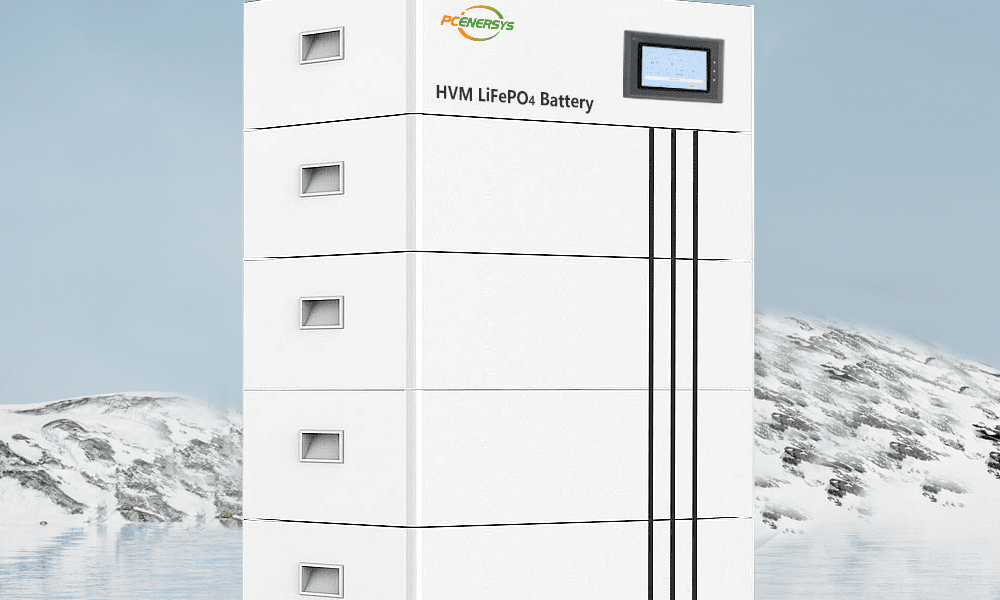Understanding High Voltage LiFePO4 Battery Standards and Regulations

High Voltage LiFePO4 Battery is a type of energy storage battery that we often see around us. They have brought many different changes to various industries. As demand increases, so does the need for comprehensive regulations and standards that require ongoing understanding and improvement to ensure safety, reliability, and environmental sustainability. This blog post looks closer at high-voltage LiFePO4 battery standards and regulations, exploring their production, use, and disposal guidelines.
High Voltage LiFePO4 Battery standards: a closer look
Establishing reliable standards is critical for seamlessly integrating high-voltage LiFePO4 batteries into various applications. Industry organizations and regulatory agencies are crucial in developing and updating these standards. From voltage specifications to thermal management requirements, understanding the complexity of these standards is critical for manufacturers, engineers, and end users.
The IEC 62619 standard outlines specific requirements for secondary lithium-ion batteries used in industrial applications, providing a comprehensive framework for high-voltage LiFePO4 batteries. Complying with these standards ensures battery safety and reliability and facilitates global market access. IEEE standards, on the other hand, focus on performance aspects involving parameters such as cycle life, energy density, and charging efficiency. A comprehensive understanding of these standards enables stakeholders to design, produce, and use high-voltage LiFePO4 cells that meet the highest industry benchmarks.
High Voltage LiFePO4 Battery Handling and Installation
Safety considerations are crucial when handling high-voltage LiFePO4 batteries. The shipment of high-voltage LiFePO4 batteries is subject to strict regulations, such as those outlined in the United Nations Manual of Tests and Criteria. Adherence to these guidelines ensures the safe transportation of batteries and mitigates risks associated with short circuits or thermal runaway. Safety protocols, including personal protective equipment and proper ventilation, must be followed during installation. The National Fire Protection Association (NFPA) provides installation guidelines for energy storage systems that address spacing, fire suppression, and emergency response planning issues. Understanding and implementing these safety measures protects the individual and the investment in a high-voltage LiFePO4 battery system.
Environmental Impact and Disposal: High Voltage Lithium Iron Phosphate Batteries
As sustainable development becomes the focus, regulations regarding the environmental impact of high-voltage lithium iron phosphate batteries are receiving increasing attention. Battery recycling is governed by directives such as the European Union’s Waste Electrical and Electronic Equipment (WEEE) directive, which requires the recycling of batteries to recover valuable materials and minimize environmental impact. High voltage LiFePO4 batteries are known for their long life and significantly contribute to sustainable development. In addition, advances in recycling technologies, such as hydrometallurgical processes, have paved the way for efficiently recycling lithium iron phosphate battery materials. By adhering to these recycling guidelines and adopting innovative technologies, stakeholders can contribute to the circular economy and reduce the environmental impact of high-voltage lithium iron phosphate batteries.
Cross-border supervision of high voltage LiFePO4 batteries
National borders do not limit the prospects for high-voltage lithium iron phosphate battery regulations. Their regulatory frameworks vary from region to region, with each country adopting standards that meet its needs and priorities. For example, China implemented the GB/T 31485 standard, which outlines the safety requirements for lithium-ion batteries used in electric vehicles, setting a benchmark for the rapidly expanding Chinese electric vehicle market. In the EU, the CE mark means compliance with safety and environmental protection requirements, allowing high-voltage lithium iron phosphate batteries to circulate freely within the EU market. Navigating these different standards requires a strategic approach that combines a deep understanding of regional regulations and facilitates collaboration with international certification bodies.
High Voltage LiFePO4 Battery Compliance
Staying ahead of the curve in the rapidly evolving energy storage space requires a proactive approach to compliance. Complying with high-voltage LiFePO4 battery standards presents technical and logistical challenges. Manufacturers are under constant pressure to meet stringent requirements while remaining cost-effective. Standardization of testing procedures, such as those outlined in the IEC 62660 series of performance tests, streamlines the compliance process and ensures consistency and reliability across the industry. The emergence of artificial intelligence and machine learning in battery testing further improves efficiency and enables predictive analysis and real-time battery performance monitoring. Innovations in materials such as solid-state electrolytes enhance the safety of high-voltage LiFePO4 batteries and open up new areas for compliance with evolving standards.
Future direction
Understanding and complying with high-voltage lithium iron phosphate battery standards and regulations is critical to the sustainable development of industries that rely on these advanced energy storage solutions. The future of high-voltage lithium iron phosphate batteries depends on continued collaboration between industry stakeholders, regulators, and research institutions.





